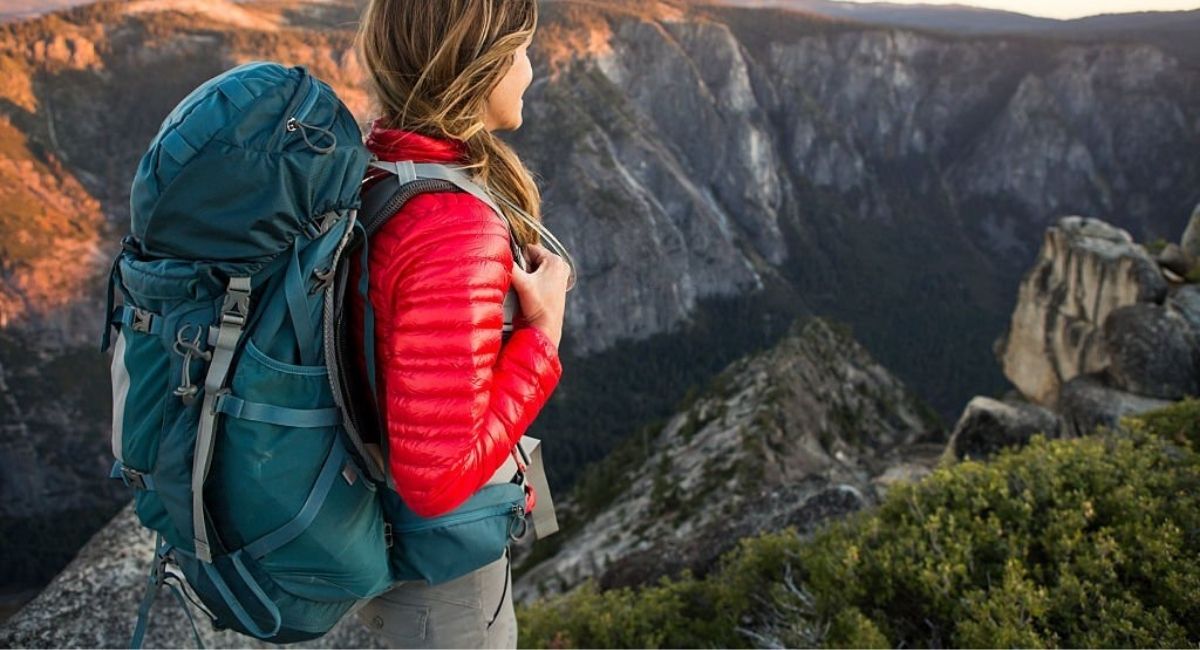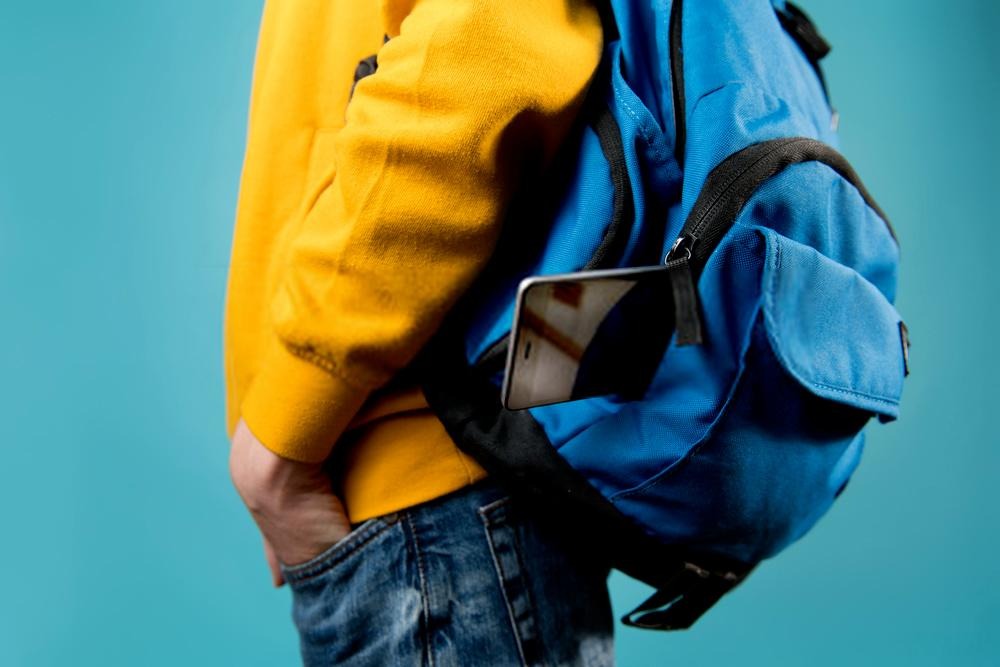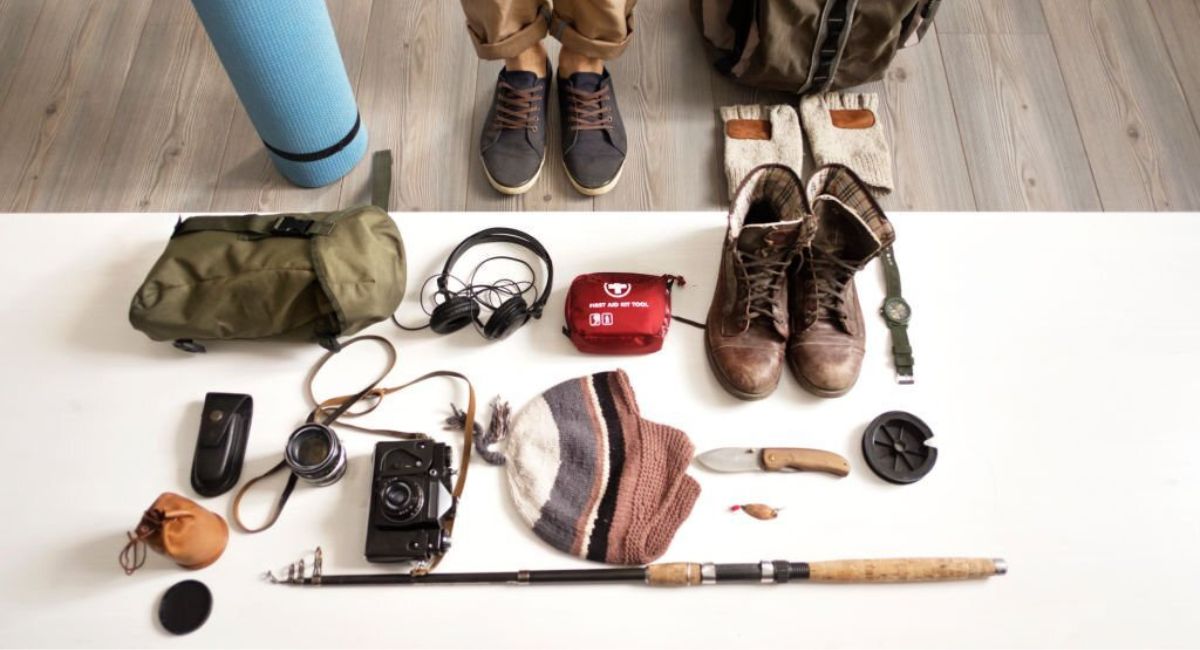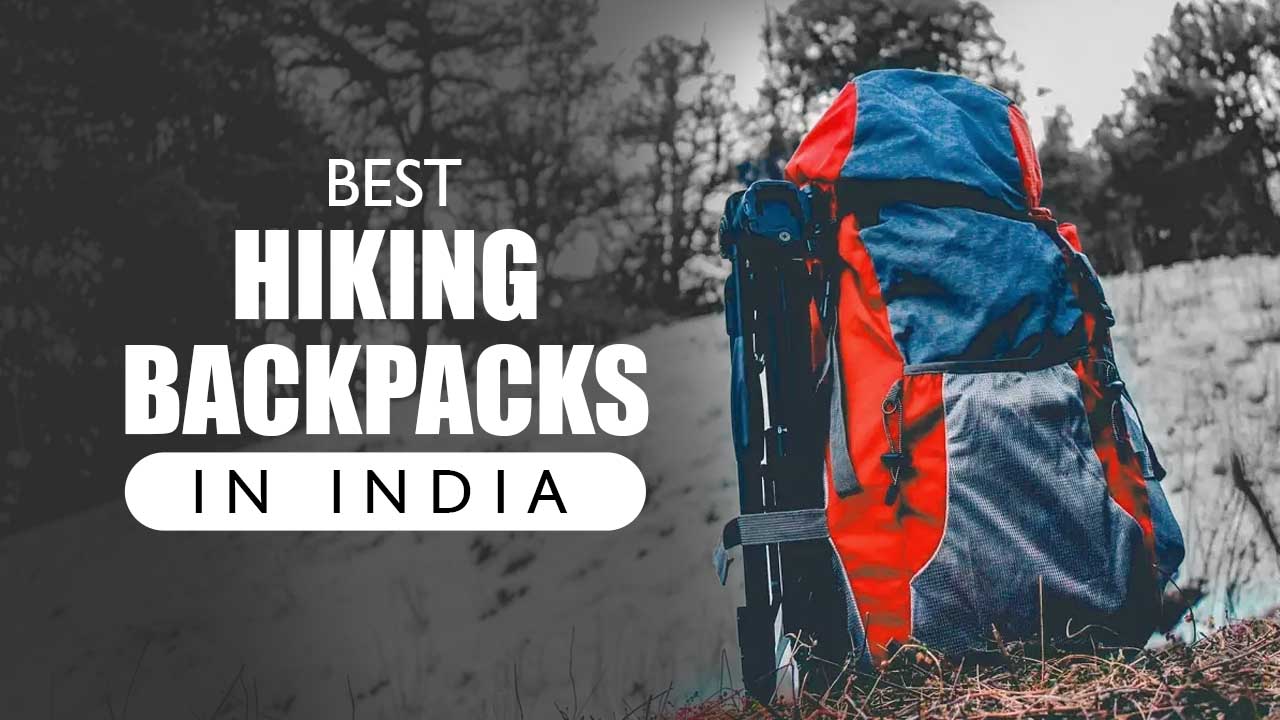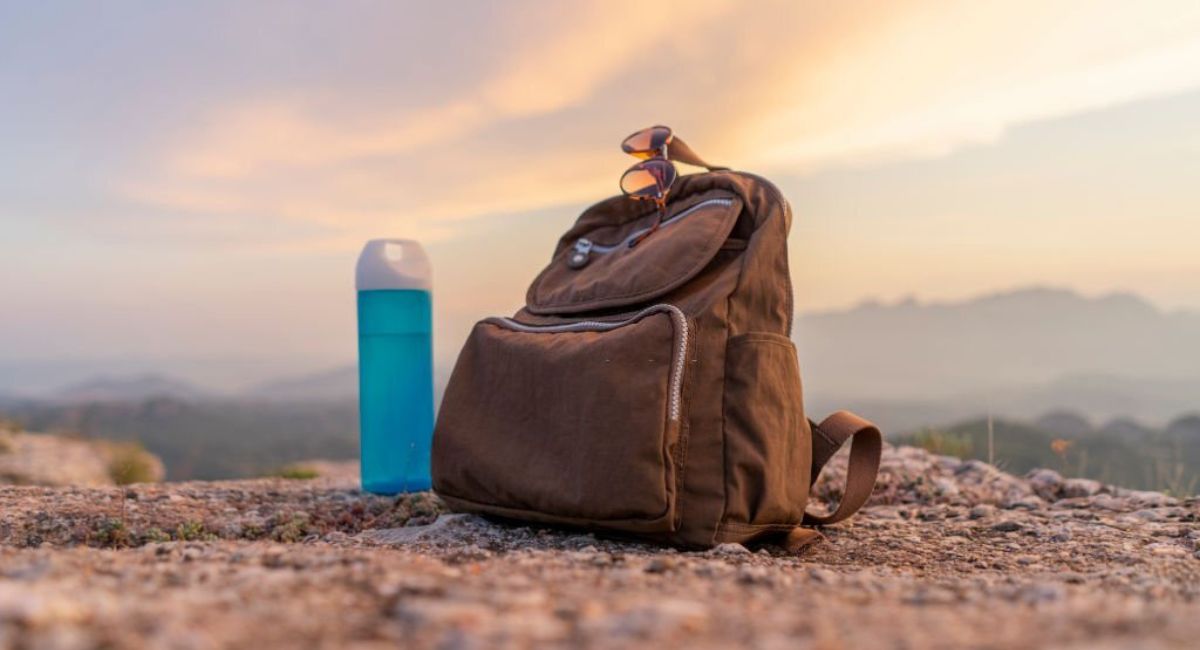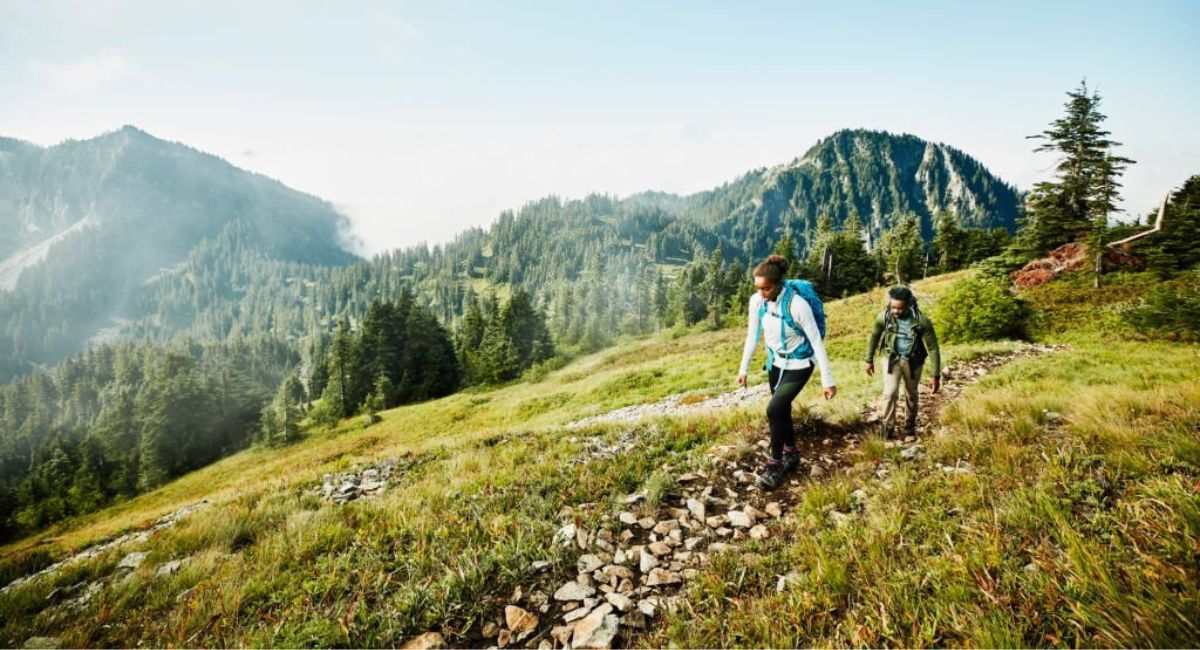The most frequent mistake made by a “novice trekker” is to overload the backpack, filling it with useless materials and equipment. However, regardless of the type of luggage chosen, there is a reasonably precise parameter on how much the backpack must weigh. It should be between 15 to 25% of the weight of the wearer, depending on the training.

A man of 80 kilos, in good physical shape, can continuously carry a backpack of about 20 kilos.
The same individual, untrained and with a few extra kilos, will have to be content with fifteen kilos to not “suffer” more than necessary.
The backpack is nothing more than a “bag” fixed to a frame. The big difference, with the same weight and characteristics, is the structure of the saddlebag and the backrest.
Technical products for trekking and mountaineering have helpful elements to improve comfort and load distribution on the back.
Internal or external structures, rigid or semi-rigid, allow you to distribute the weight evenly from the shoulders to the pelvis, taking advantage of the ergonomics of shaped shoulder straps and the ventral band, well-padded and breathable materials.
But how exactly should you go about choosing the right backpack? Lets take a look at the important factors below.
How To Choose a Trekking Backpack?
It can be daunting trying to figure out what trekking backpack is right for you. But don’t worry, we’re here to help. Below, we’ll outline the most important factors to consider when purchasing a trekking backpack, as well as provide some recommendations for our favorites. So, whether you’re a beginner or an experienced hiker, read on for all the info you need to choose the perfect trekking backpack!
What should be the capacity and size of the backpack
The first criterion based on which to select the best trekking backpack that is right for you is the capacity, a value strictly linked to the size of the backpack. The capacity is nothing more than the internal volume of the backpack and is measured in litres. This value allows you to understand precisely how large the backpack is and, therefore, can give you an idea of how many things you can take with you.
Often the backpack’s capacity is already specified in the name, also because some models are available in different sizes, which is an easy and immediate way to differentiate them. Trekking backpacks’ capacity varies greatly and ranges from 10 litres for racing backpacks up to 100 litres for professional backpacks.
In general, we can say that 30-liter backpacks are suitable for long but daily excursions, while going up, we find backpacks that can also be used for longer trips. It must certainly be considered that the larger the backpack, the larger it will be, a fact that should not be forgotten, especially if you have to travel with some means of transport.
It is important to note that there is no “universal” backpack that can fit everyone and in every situation. It is better to have at least two backpacks, one of 40/50 litres for short excursions and one of 70/90 litres for multi-day treks.
Using a single large-volume backpack, even for short excursions, perhaps half-empty, can hinder movement and progression.
And even if you plan to go a long way, be wary of huge backpacks with many external pockets, compartments, buttonholes, and straps. They can be beautiful to admire lying in the car’s trunk but impossible to carry.
What should be the weight of the backpack?
Weight is another significant value to evaluate, which often and erroneously is not even considered when choosing a trekking backpack. Weight is a determining factor during any backpack use, and it is even more so on excursions or particularly long trips.
Of course, if the curb weight of the backpack is low, for the same content, the backpack will be lighter than other backpacks with a higher empty weight. The goal is always to have an optimal weight-content ratio so that you can carry everything you need without damaging your back or tiring yourself more than necessary.
The ideal weight of the backpack is subjective. It varies according to the physical fitness of the user and other variables. Still, usually, we try to travel with a backpack that weighs about 15-25% of the person who carries it. This means that those who weigh 70 kg must try to travel with a backpack of between 10 and 17 kg. We repeat that this is an indicative value and that the backpack’s weight is a factor to be evaluated subjectively.
Even if there are backpacks with volumes greater than 100 litres, we recommend never exceeding 80, for the simple reason that the larger our backpack, the more things we will cram into, regretting the choice as soon as we leave.
The empty weight should not exceed 2 kilos, including a double internal compartment that can be separated and accessed from the outside; a large hood with external and internal pockets; two side pockets; zippered pockets on the ventral band; waterproof bag cover; reinforced bottom. Everything else is just extra weight.
| Volume | Empty weight | |
| Backpack for easy excursion | 25/35 litres | 1.2 kg |
| Backpack for day trips | 35/50 litres | 1.4 kg / 1.7 kg |
| Multi-day trekking backpack | 60/80 litres | 2 kg / 2.5 kg |
What other features should the backpack have?
In this paragraph, we have analyzed all the elements that are not part of the main structure of the backpack, but that can direct one’s choice towards the model closest to everyone’s needs.
Waterproof cover
Trekking backpacks are designed for hiking and outdoor activities and, as such, must be able to be used in all weather conditions. Therefore, many trekking backpacks have integrated a completely waterproof rain cover that you can use to cover the backpack and keep its contents dry.
Some backpacks are already water repellent in their own right and therefore do not need the waterproof cover in light rain. Furthermore, if the water-repellent cover is not integrated, it is possible to purchase it separately.
External pockets
Another important factor to consider when choosing the trekking backpack is the number of external pockets the model in question has. This aspect must also be evaluated according to your needs. In fact, in some cases, several small pockets can help store objects such as sunglasses, gloves, or snacks. In other situations, these pockets are not so functional, and you can opt for a larger capacity than the main compartment.
The average number of external pockets varies a lot, and usually, there are two side pockets, two on the shoulder straps, one on the horizontal belt, one on the top of the backpack, and one near the base.
The pockets are also different from each other. Some are more capacious; others are breathable. Some are closed by a zip and others by an elastic band. There is no better solution in this case, but you must choose what can be useful for the type of use you intend to make of the backpack.
Bottom access
Very often, the thing we need is right at the bottom of the backpack. In these cases, there are two options: empty your backpack or give up looking. For this reason, on many backpacks, a zip is sewn at the bottom of the backpack so that you can access the objects positioned on the bottom quickly and easily. This option is very popular on larger backpacks. Another option that allows obtaining similar results is the presence of an opening on the long side of the backpack.
Accessory holder
Especially for those who make long hikes or are in the mountains, it can be convenient to secure some accessories such as walking poles or ice axes to the backpack so as not to have to hold them all the time. For this purpose, many hiking backpacks are equipped with laces and elastic bands to which accessories that are not currently being used can be attached or hung.
External access for hydration
During longer hikes where you are subjected to intense effort, staying hydrated is an important aspect; however, stopping to take your bottle is not the most comfortable option, and in some situations, it is not possible.
For this reason, many backpacks have a pocket in which a special bag can be inserted to be filled with water or other liquids. It can be drunk through a sort of soft rubber straw that comes out of the pocket through a hole and reaches the front of the backpack.
Compartment for sleeping bag
For all people who use the backpack for excursions that last more than a day and those who even travel with a backpack on their backs, the sleeping bag is an essential accessory that allows you to sleep warm and dry even when camping or you sleep outdoors.
Modern sleeping bags can be very compact. However, if you have to carry them in the backpack’s main compartment, you risk taking up too much space. For this reason, many backpacks are equipped with a pair of adjustable straps or even a compartment to carry the sleeping bag with you without taking up space for other objects or accessories.
Which material should the backpack be made of?
Another important aspect regarding trekking backpacks is their material, which must have a good weight/resistance ratio and is the main element that makes them resistant and allows them to last over time.
Most hiking backpacks are made of polyester, a very strong and lightweight material. On the other hand, some trekking backpacks are made of nylon, which is resistant and light like polyester and softer to the touch. However, nylon is less breathable than polyester, which can favor the formation of bad smells inside the backpack, especially if there are dirty or damp clothes.
Furthermore, whatever it is, the material the backpack is made of can be treated to become water repellent and therefore resist rain. Note, however, that this does not mean that the backpack is completely waterproof but that it can withstand light rain without needing additional covers.
Does the backpack have a back-friendly design?
In recent seasons, cutting-edge companies have focused mainly on the backs, which are the “hinge” between our back and the container with the load.
Made of hyper-breathable materials, usually with a closed-cell that does not absorb sweat and humidity, the backs differ according to the load capacity of the backpack; in those in light backpacks and for day trips, the back is usually in a single piece, curved to create a free area between the body and the backpack, able to guarantee maximum ventilation.
In multi-day trekking backpacks, which have to withstand much more demanding loads, the main feature is the arrangement of support and shock-absorbing areas, which are distributed according to the physiology of the back. Free areas are created in between where air can circulate freely, thus avoiding the stagnation of sweat.
Another fundamental detail concerns the size of the backrest: a two-meter long Marcantonio has different needs from a girl sixty meters tall. The best backpacks are now offered in various sizes, with many possibilities for adapting to the back.
So, the ergonomic backrest must adapt to our posture, allow a good weight balance, and let the back breathe. Some backpacks have a tensioned net in the backrest that allows the back to breathe and keeps the load stable.
The shoulder straps, possibly padded, must allow the balance of the weight on the back and, therefore – especially for the most spacious backpacks – be adjustable. Even the waist belt, especially for multi-day backpacks, is essential to unload the weight on the hips partially.
On the market, there are also “modular” backpacks, with a large central body (always greater than 70 litres) and a “removable” part (usually the hood or central pocket), which in turn becomes a small backpack of 10 / 12 litres.
Used as travel backpacks, they are not very practical for trekking, even for excessive weight. On large backpacks, stabilizing straps on the shoulder straps are essential because they allow the exact positioning of the backpack.
Frame Type
Internal or external frame backpacks are the two main types on the market. Internal frames are designed to hug your body and distribute the weight evenly.
External frames are more comfortable for carrying heavy loads over long distances because they sit away from your body, giving you more ventilation. If you’re going on a day hike or short overnight trip, internal frame backpack is a good choice. If you’re embarking on a longer expedition, go with an external frame backpack.
Frameless backpacks are also available, but they’re not as comfortable or durable as the other two types.
Backpack Fit
One of the most important things to consider when choosing a hiking backpack is fit. If your backpack doesn’t fit properly, you’re going to be miserable carrying it on your back, no matter how much money you spend. The best way to determine fit is to go to a store and try on different packs. But, if you’re buying online, here are some things to look for:
- Torso Length: To find your torso length, have someone measure from the bony protrusion at the base of your neck to the top of your hipbone. Alternatively, you can measure yourself by holding a yardstick or tape measure horizontally across your back at about the level of your shoulder blades. The number of inches (or centimetres) is your torso length.
- Hip Belt: Once you know your torso length, you can narrow down your choices to packs that offer a hip belt that will fit your waist size. To find your hip size, measure around the fullest part of your hips. The hip belt should wrap around your hips snugly, but not so tightly that it’s uncomfortable.
- Shoulder Straps: The shoulder straps of a backpack should adjust to fit snugly against your shoulders. If they’re too loose, the pack will bounce around and be difficult to carry. If they’re too tight, they’ll be uncomfortable.
- Back Panel: The back panel of a backpack is the part that rests against your back. It should be well-padded and contoured to fit the natural curve of your spine.
- Load-lifter straps: Load-lifter straps attach the top of the pack to your shoulders and help transfer some of the weight to your hips.
- Sternum strap: Sternum strap goes across your chest and keeps the shoulder straps from slipping off your shoulders.
Tips for choosing the right backpack
As with many other technical products, manufacturers often tend to excessively “enrich” the models, equipping them with details and accessories that often must then be eliminated to make their backpack “perfect.”
- Pockets, buckles and cords, straps, and other external and protruding details are almost always a nuisance. Avoid transforming the backpack into a “Christmas tree” with various objects and tinsel.
- The load must always be inside, and nothing must “dangle” outside it. The compartments must be few and well organized because the essential elements, such as batteries, spare parts, and supplies, must be in the main space of the backpack. The very light backpacks, from 15 litres maximum, especially have external side pockets in the belt and a central opening with a zip.
- The most spacious backpacks also have a large upper pocket, ideal for storing the raincoat that you always have at hand or wet clothing that should be separated from the central internal space of the backpack.
- In the case of technical mountaineering backpacks, the buckles for ice axes, trekking poles, and the external elastic net for the helmet are also helpful. The elasticated cords are useful for further compacting the load.
- It is also essential to check the quality of the materials used and the details (hinges, hooks, padding, frame, etc.). The seams, especially those on the attachment of the shoulder straps, should also be strong.
- Never exaggerate the volume of the external pockets. These, if not perfectly balanced, can unbalance the load. It is better if these pockets are retractable and compressible and follow the shape of the backpack.
- A waterproof shell performs its task better than any suitably treated fabric to make the backpack impenetrable to water. The more advanced models, especially the medium/high-end models, hide a pocket with a waterproof cape to be extracted to protect the backpack and its contents in case of rain. It can also be purchased separately. We advise getting it, especially for multi-day excursions, because the weather changes over 24 hours, especially in the mountains.
- The ability to separate the upper part from the lower one and the possibility of accessing both from the outside are handy, especially for long treks but also for trips of a few hours.
- Some large cargo backpacks allow the usage of “extensions” that increase the internal volume by about ten litres. However, remember that a backpack that is too “high” beyond the shoulder line unbalances and makes progression more tiring, forcing the torso into an unnatural posture.
Conclusion
Trekking backpacks are an important investment for hikers and outdoor enthusiasts. By understanding the different types of trekking backpacks available and what to look for when making a purchase, you can be sure to find the perfect backpack for your needs.
Frequently asked questions
1. What size backpack to use for a day hike?
When choosing a backpack for day hiking, it is important to consider the size of the pack. It should be large enough to carry all the necessary gear, but not so large that it becomes cumbersome. A good rule of thumb is to choose a pack that is about 35-40 liters in capacity. This will provide enough space for everything you need, without being too big or too small.
2. Can you use a regular backpack for hiking?
Yes, you can use a regular backpack for hiking, but it might not be the most comfortable option and it might not have all the features that you need. If you are planning on doing any serious hiking, then you should invest in a good quality hiking backpack.
3. How do I know my backpack size?
To find your backpack size, measure the length of your torso and hip. To do this, have a friend help you measure from the bony protrusion at the base of your neck (your C7 vertebrae) to the top of your hipbone. Alternatively, you can measure yourself by holding a tape measure at your C7 vertebrae and running it down to the top of your hipbone. Once you have this measurement, consult a size chart to find your backpack size.

